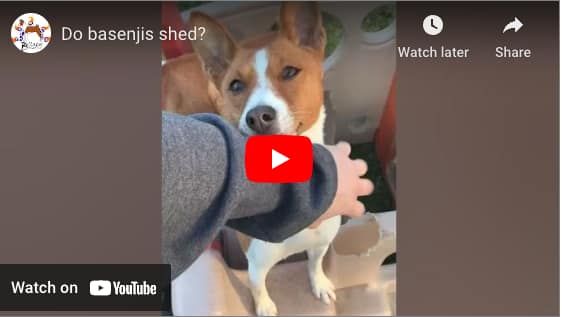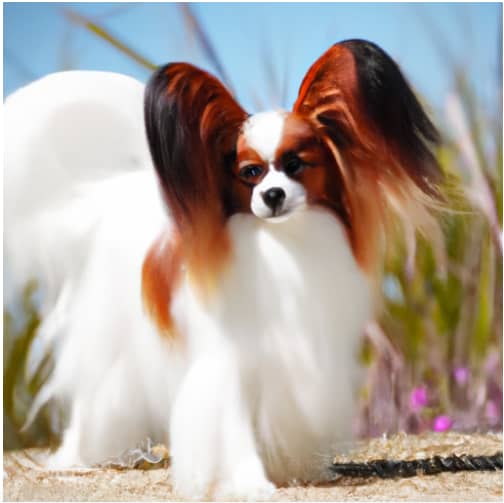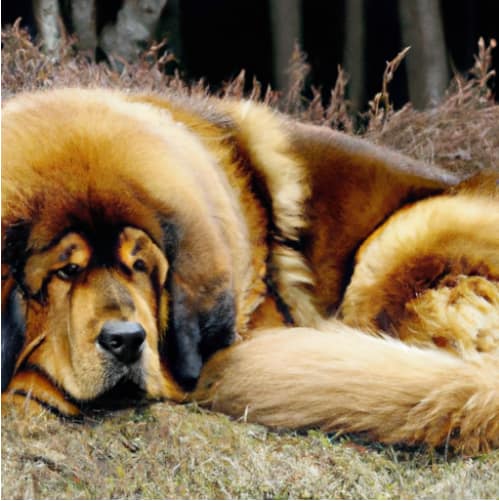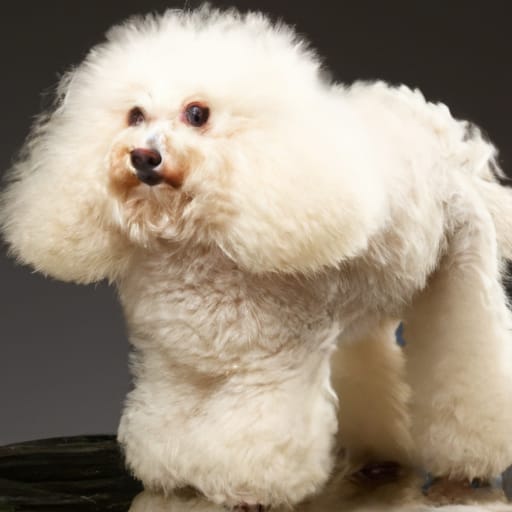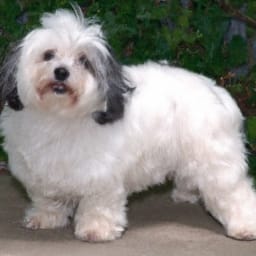Basenjis Shedding: Why Do Basenjis Shed?
Do Basenjis Shed? If you’ve ever come across a Basenji, you may have noticed their sleek and shiny coats. But have you ever wondered why these beautiful dogs shed? In this article, we will uncover the mystery behind Basenjis shedding and explore the reasons behind this natural process. From understanding their unique genetic makeup to uncovering the role of environmental factors, we will shed light on the shedding habits of these fascinating creatures. So, let’s embark on a journey to discover why Basenjis shed and gain a deeper understanding of these lovable canines.
Overview of Basenjis
Introduction to Basenjis
Welcome to this comprehensive article on Basenjis shedding! Basenjis are a unique and fascinating breed known for their intelligence, independence, and, yes, their minimal shedding. If you are considering adopting or already have a Basenji, it’s important to understand their shedding patterns and how to effectively manage it. In this article, we will explore the physical characteristics, temperament, and shedding specifics of Basenjis, as well as provide tips on how to keep their coat healthy and minimize shedding.
Physical characteristics of Basenjis
Basenjis are a small to medium-sized breed with a distinctive appearance. They have a well-muscled body, erect ears, and a curled tail. One of their most notable features is their short and tight double coat, which contributes to their minimal shedding. The coat comes in various colors such as red, black, and brindle, and it is known for being low-maintenance and hypoallergenic, making Basenjis an excellent choice for individuals with allergies or those who prefer a clean living environment.
Temperament and behavior of Basenjis
Basenjis are often described as intelligent, curious, and independent dogs. They have a strong prey drive and a natural instinct to hunt, which can make them a bit challenging to train. Despite their independence, Basenjis are also known for their affectionate nature towards their families. They are typically not excessive barkers but may resort to unique vocalizations known as “yodels” or “baroos.” It’s important to foster a positive and structured environment to keep them mentally stimulated and prevent any behavioral issues that may arise from boredom or frustration.
What is Shedding?
Definition of shedding
Shedding is a natural process in which dogs lose their old or damaged fur to make way for new hair growth. It is a normal part of a dog’s life cycle and is influenced by various factors such as genetics, health conditions, and the environment. Shedding allows dogs to regulate their body temperature, eliminate old hair, and maintain a healthy and functional coat.
Reasons behind shedding in dogs
Dogs shed their fur for various reasons. Primarily, shedding helps them adapt to different seasons by growing a thicker coat in winter for insulation and shedding excess hair in summer to stay cool. Shedding also plays a role in removing dead or damaged hair, preventing matting and tangling, and stimulating new hair growth. Additionally, hormonal changes, stress, and certain health conditions can impact the intensity and frequency of shedding in dogs.
Importance of shedding for dogs
Shedding is essential for dogs to maintain a healthy coat. Through shedding, dogs can get rid of old and damaged hair, which helps prevent matting, tangling, and the accumulation of debris or parasites in their fur. Shedding also ensures proper airflow to the skin, preventing overheating, and allowing fresh hair to grow. By understanding the shedding process and implementing appropriate grooming practices, you can help your Basenji have a vibrant and well-maintained coat.
Understanding Basenjis and Shedding
Basenjis’ natural coat
Basenjis have a unique coat that sets them apart from many other breeds. Their short and tight double coat consists of a thick, soft undercoat and a coarse, straight outer coat. This combination of fur helps protect them from the elements while maintaining their distinctive sleek appearance. The texture of their coat is why Basenjis are often considered a low-shedding breed.
Minimal shedding in Basenjis
Unlike many other dog breeds, Basenjis are known for their minimal shedding. They are often categorized as a hypoallergenic breed because their coat doesn’t release as much dander or allergens into the environment compared to breeds with longer or denser coats. However, it’s important to note that while Basenjis shed less, they are not entirely non-shedding, and some degree of shedding is still expected.
Unique features of Basenjis’ coat
Basenjis’ coats have some unique properties that contribute to their minimal shedding. Their short hair doesn’t tangle easily, reducing the likelihood of mats or knots forming. Additionally, their coat lacks an oily or waxy texture commonly found in other breeds, which means it requires less frequent bathing. However, despite their low-shedding nature, Basenjis still need regular grooming and maintenance to ensure a healthy coat and minimize shedding.
Factors Influencing Shedding in Basenjis
Genetics and hereditary factors
Genetics play a significant role in determining a Basenji’s shedding tendencies. If both parents have minimal shedding coats, it is more likely that their offspring will also have less shedding. However, individual variation is still possible, and even Basenjis from low-shedding bloodlines may shed more than expected. Understanding the lineage and genetic history of your Basenji can provide insights into their shedding patterns.
Seasonal shedding in Basenjis
While Basenjis shed less overall, they do experience seasonal shedding. As the seasons change, Basenjis may shed their old winter coat to make way for a lighter summer coat or vice versa. This shedding cycle helps them adapt to temperature changes, ensuring their coat remains functional and suited to their environment. Regular brushing and grooming during these transitional periods can help manage shedding and keep your Basenji’s coat healthy.
Diet and nutrition
A dog’s diet can significantly impact the health of their coat and the amount of shedding. Ensuring your Basenji receives a balanced and nutritious diet is essential for maintaining a healthy coat. Nutrients such as omega-3 fatty acids, vitamin E, and biotin play crucial roles in promoting healthy skin and coat. Consult with your veterinarian to determine the right diet for your Basenji, keeping in mind any specific dietary needs or allergies they may have.
Health and medical conditions
Certain health conditions or underlying medical issues can influence shedding in Basenjis. Allergies, skin infections, hormonal imbalances, and even parasites can cause excessive shedding or other coat-related problems. Regular veterinary check-ups are important for identifying and addressing any health issues that may be contributing to shedding. Your veterinarian can recommend appropriate treatments or dietary supplements to support your Basenji’s coat health.
Stress and anxiety
Stress and anxiety can also affect a Basenji’s shedding patterns. Just like humans, dogs can experience stress and exhibit physical signs, including changes in their coat quality or increased shedding. By providing a calm and structured environment, addressing any sources of stress or anxiety, and incorporating mental stimulation into their daily routine, you can help minimize shedding caused by these factors.

Managing Shedding in Basenjis
Regular grooming practices
Regular grooming is crucial for managing shedding in Basenjis. Establishing a grooming routine from an early age will ensure that your Basenji becomes comfortable with the process and make it easier for both of you. Set aside dedicated time for grooming sessions, and if possible, make it a positive and bonding experience by rewarding your Basenji with treats or praise. Consistency is key to maintaining a healthy coat and reducing shedding.
Bathing and drying
Basenjis generally have clean and odorless coats, thanks to their low-shedding nature and lack of oiliness. Bathing should be done as needed, and be sure to use a gentle, hypoallergenic shampoo formulated specifically for dogs. Over-bathing can strip the coat of essential oils, leading to dryness and potential shedding issues. After bathing, ensure your Basenji is thoroughly dried to prevent moisture from becoming trapped in their coat, which can lead to skin problems.
Brushing techniques for Basenjis
Although Basenjis have minimal shedding, regular brushing is still necessary to remove loose hair and stimulate healthy hair growth. Use a soft-bristle brush or a grooming glove to gently brush your Basenji’s coat in the direction of hair growth. Pay extra attention to areas prone to matting, such as behind the ears, under the chin, and around the tail. Brushing should be done at least once a week, but during shedding seasons, more frequent brushing may be required.
Choosing appropriate grooming tools
When it comes to grooming tools, it’s important to select ones that are suitable for your Basenji’s coat. Opt for a slicker brush or a deshedding tool specifically designed for short-haired breeds. These tools effectively remove loose hair without causing any discomfort or damage to the coat. Avoid using tools with sharp blades or harsh bristles that may irritate your Basenji’s sensitive skin.
Professional grooming services
If you find grooming your Basenji at home challenging or time-consuming, you may consider utilizing professional grooming services. Professional groomers have the experience and expertise to handle Basenjis’ specific grooming needs. They can provide professional grooming techniques, including deshedding treatments, that will help minimize shedding and keep your Basenji’s coat in excellent condition.
Maintaining a clean living environment
Keeping a clean living environment is essential for managing shedding. Regularly vacuuming and removing pet hair from furniture and floors will help prevent excessive shedding from accumulating in your home. Using lint rollers or pet hair removers can also be helpful for removing loose hair from clothing or upholstery. Additionally, washing and regularly changing your Basenji’s bedding can reduce the spread of allergens and hair in your home.
Preventing Excessive Shedding
Balanced and nutritious diet
Providing your Basenji with a balanced and nutritious diet is crucial in preventing excessive shedding. Ensure their food contains adequate amounts of essential nutrients, such as omega-3 fatty acids and vitamins, which promote coat health. High-quality dog food formulated for specific life stages and breed sizes will help ensure your Basenji receives the necessary nutrients for a healthy coat.
Providing adequate hydration
Proper hydration is vital for maintaining a healthy coat and minimizing shedding. Make sure your Basenji has access to fresh and clean water at all times. Dehydration can lead to dry skin and coat, which may contribute to shedding issues. If you suspect your Basenji is not drinking enough water, consult with your veterinarian for guidance on encouraging proper hydration.
Regular exercise and mental stimulation
Regular exercise and mental stimulation are essential for your Basenji’s overall well-being, including their coat health. Engaging your Basenji in daily physical activities and providing interactive toys or puzzles to keep them mentally stimulated can help reduce stress and anxiety, which can indirectly impact shedding. Aim for at least 30 minutes to one hour of exercise every day, depending on your Basenji’s age and energy level.
Stress reduction techniques
Maintaining a stress-free environment is crucial in preventing excessive shedding caused by stress. Create a peaceful and safe space for your Basenji, provide them with daily routines and structure, and ensure they receive plenty of attention and affection. Calming activities such as gentle massage or aromatherapy may also help alleviate stress and promote overall coat health.
Regular veterinary check-ups
Regular veterinary check-ups are essential for monitoring your Basenji’s overall health, including their coat condition. Your veterinarian can conduct thorough examinations, address any shedding concerns, and detect early signs of potential health issues that may be contributing to shedding. They can also provide guidance on specific dietary supplements or treatments to support a healthy coat.
Dealing with Allergies and Shedding
Understanding allergies in Basenjis
Basenjis, like any other breed, are not immune to allergies. Allergies can manifest in various ways in dogs, including skin irritations, itching, and excessive shedding. Common allergens for Basenjis include pollen, dust mites, mold, and certain foods. Understanding your Basenji’s specific allergies and their triggers can help in effectively managing both the allergies and shedding.
Common allergic reactions
Allergic reactions in Basenjis can range from mild to severe. Symptoms may include excessive scratching, redness, skin irritations, hot spots, or increased shedding. It’s important to monitor your Basenji closely for any signs of allergies and seek veterinary advice if necessary. Your veterinarian can conduct allergy tests or recommend elimination diets to identify the specific allergens affecting your Basenji.
Reducing allergens in the environment
Reducing exposure to allergens in your Basenji’s environment can help manage both allergies and shedding. Regularly cleaning your home, using hypoallergenic bedding or furniture covers, and using air purifiers can help minimize the presence of allergens. Additionally, regularly bathing your Basenji with a hypoallergenic shampoo can help remove allergens from their coat and reduce allergic reactions.
Consulting a veterinarian for allergy management
If your Basenji is experiencing allergies and excessive shedding, it is recommended to consult with a veterinarian who specializes in dermatology or allergies. They can recommend appropriate treatments or medications to manage the allergies, relieve itching, and minimize shedding. It’s important to follow their guidance and carefully monitor your Basenji’s response to treatment to ensure their well-being.
Tips for Minimizing Basenjis’ Shedding
Daily brushing routine
Incorporating a daily brushing routine into your Basenji’s grooming regimen can help minimize shedding by removing loose hair and keeping the coat healthy. Spend a few minutes each day gently brushing their coat with a soft bristle brush or grooming glove. Not only will this reduce shedding, but it will also promote bonding between you and your Basenji.
Using specialized shedding control products
Consider using specialized shedding control products, such as deshedding shampoos or conditioners, to further minimize shedding in your Basenji. These products are formulated to reduce excessive shedding by promoting a healthy coat and preventing hair breakage. Be sure to choose products that are specifically designed for dogs and consult with your veterinarian if you have any concerns.
Maintaining a consistent grooming schedule
Consistency is key when it comes to managing shedding in Basenjis. Establishing and maintaining a regular grooming schedule will help prevent the build-up of loose hair in their coat and minimize shedding. Stick to a routine that works for both you and your Basenji, and make grooming sessions a positive and enjoyable experience for them.
Vacuuming and cleaning strategies
As a Basenji owner, it’s important to stay on top of vacuuming and cleaning to minimize the presence of loose hair in your home. Invest in a vacuum cleaner specifically designed for pet hair, and consider using lint rollers or pet hair removers for furniture and clothing. Regularly washing your Basenji’s bedding and keeping their living areas clean will also help manage shedding effectively.
Avoiding stress triggers
Stress can contribute to increased shedding in Basenjis, so it’s important to identify and avoid stress triggers whenever possible. Whether it’s changes in routine, loud noises, or unfamiliar environments, try to create a calm and predictable setting for your Basenji. Providing them with a safe and secure space and offering plenty of mental and physical stimulation will help reduce stress and ultimately minimize shedding.
Regular exercise to promote a healthy coat
Regular exercise is not only beneficial for your Basenji’s overall health but also for promoting a healthy coat and minimizing shedding. Engage your Basenji in daily physical activities such as walks, play sessions, or interactive toys. Exercise helps stimulate blood circulation, delivering nutrients to the coat and promoting hair health. Additionally, it can help reduce stress and anxiety, which indirectly contributes to shedding.
Additional Considerations
Recognizing excessive shedding
While Basenjis naturally shed to a lesser extent, it’s important to recognize when shedding becomes excessive. If you notice a sudden increase in shedding, bald patches, irritated skin, or your Basenji seems uncomfortable, it’s crucial to consult with a veterinarian. Excessive shedding may indicate an underlying health issue that requires medical attention.
Knowing when to seek professional help
If you find it challenging to manage your Basenji’s shedding or if you suspect there may be an underlying health concern, don’t hesitate to seek professional help. Groomers, veterinarians, or specialists in dermatology can provide guidance and support in managing shedding effectively and ensuring your Basenji’s well-being.
Importance of understanding Basenjis’ individual needs
As with any dog breed, it’s important to recognize that individual Basenjis may have unique shedding patterns and specific needs. Pay attention to your Basenji’s coat, body language, and overall health to identify any changes or concerns. By understanding and meeting their individual needs, you can ensure your Basenji’s coat remains healthy and shedding is minimized.
Conclusion
Summary of Basenjis shedding
Basenjis are a wonderful breed known for their minimal shedding and unique coat. Their short and tight double coat requires regular grooming to maintain a healthy and vibrant appearance. Shedding in Basenjis is influenced by factors such as genetics, seasons, diet, and overall health. By understanding and addressing these factors, you can effectively manage shedding and keep your Basenji’s coat in optimal condition.
Tips for managing shedding in Basenjis
To manage shedding in Basenjis, it’s important to establish a regular grooming routine, provide a nutritious diet, and maintain a clean living environment. Regular brushing, appropriate grooming tools, and professional grooming services can help keep shedding under control. Preventing excessive shedding involves promoting a balanced lifestyle, addressing stress triggers, and seeking professional help when needed.
Importance of a healthy coat for Basenjis’ well-being
A healthy coat is not only aesthetically pleasing but also crucial for a Basenji’s overall well-being. A well-maintained coat ensures proper insulation, protects against weather elements, and contributes to your Basenji’s comfort. By implementing appropriate grooming practices and addressing shedding effectively, you are supporting your Basenji’s health and happiness.
Remember, while Basenjis are often considered a low-shedding breed, individual variation and factors such as genetics and health conditions can influence shedding. By understanding your Basenji’s specific needs and providing the necessary care, you can minimize shedding and enjoy a beautiful and healthy coat on your beloved Basenji.


